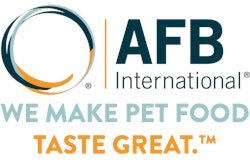
Continuing its rapid growth, the Chinese pet food market is projected to reach U.S.$2.2 billion by the end of 2018, representing 21 percent year over year growth. George He, account director with GfK Retail and Technology China, presented this and other market data during Petfood Forum China 2018 on August 21 in Shanghai.
More than 130 pet food professionals from China and other regions of the world learned about the domestic market during the seventh edition of the conference, held in conjunction with Pet Fair Asia 2018. He’s data showed that online pet food sales in China are particularly strong, increasing 30.8 percent year over year, though that growth has slowed from 40.7 percent in 2017. Yet online sales now account for more than half of the Chinese pet food market at 51.8 percent, compared to 48.2 percent for brick and mortar outlets.
Pet store sales rule, cat products on the rise
In terms of the types of offline retail outlets selling pet food in China, pet stores own a 69.3 percent share, compared to 18.6 percent for hypermarkets and 12.1 percent for veterinary hospitals. Cat food sales are rising in all of those channels, and while cat food is currently only 40 percent of the market, the segment is increasing by 40 percent a year. Dog food sales, on the other hand, have seen a decline in hypermarkets, with increases in the other channels yet not at the same rate as cat food. He and other experts in China said there are restrictions to dog ownership in some cities, including the size of dogs allowed.
Dry pet food predominates for both cats and dogs in China, and natural and grain-free products now comprise 29 percent and 10 percent, respectively, of the pet food market. While the market consists primarily of foreign brands, at 66 percent, that share is down from 74 percent in 2017. Domestic brands are seeing greater growth, especially in higher-priced, premium products.
New pet food regulations in China
Wang Jinquan, Ph.D., associate professor with the Feed Research Institute of the Chinese Academy of Agricultural Sciences and another speaker at Petfood Forum China, highlighted the domestic market in his presentation, saying 15 companies now have revenues exceeding 100 million RMB (U.S.$14.5 million) in 2017.
As lead drafter of new pet food regulations in China, Wang also presented details on the regulations, which include definitions of the types of pet food covered (pet compound feed, equivalent to complete pet foods, plus pet additive premix food and pet snacks), the licensing requirements for each, labeling and hygiene/safety regulations. The new regulations took effect June 1, 2018, with a grace period until September 1, 2019, to comply with some aspects.
Other speakers at Petfood Forum addressed the effect of kibble diameter on palatability, by Kris Figge of AFB International; choosing the right pet food safety management system, by David Rosenblatt, D.V.M, of Sher Consulting and Training; keeping up with high growth in China and southeast Asia, by Warren Rickard of Anivive; “free-from” negative marketing claims, by Paola Cane, Ph.D., of Mia Solution; best practices for safe pet food production, by Grace Wang of Diana Pet Food; and the gut-brain axis, by Francesca Susca, Ph.D., of Lallemand Animal Nutrition.
Petfood Forum China will take place again in August 2019 in Shanghai.















